Creating Your Perfect Home Yoga Space: A Complete Guide
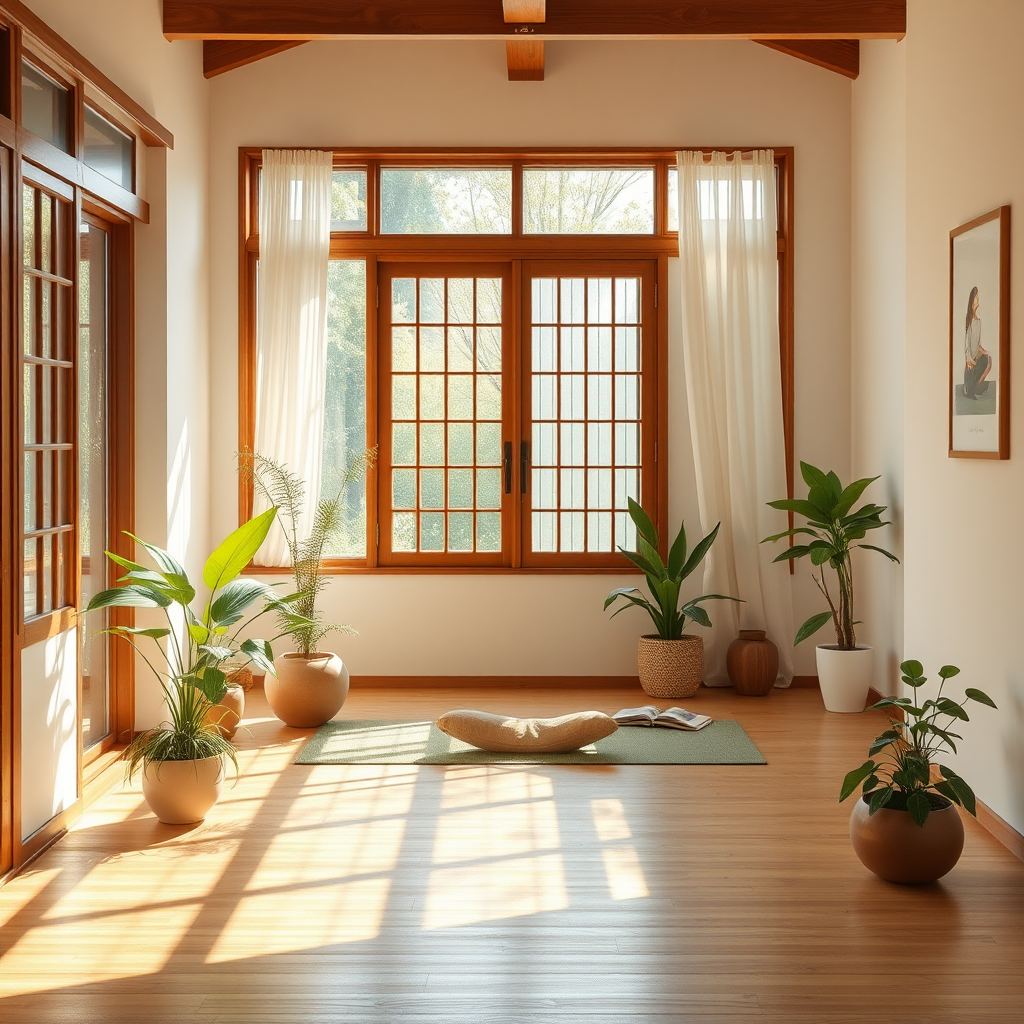
Transform any corner of your home into a peaceful yoga sanctuary with our comprehensive guide. Whether you're using the best yoga app for home practice or following traditional routines, creating the right environment is essential for deepening your practice and cultivating mindfulness.
Why Your Space Matters for Home Yoga Practice
Your environment significantly impacts your yoga experience. A dedicated space, even if it's just a corner of your living room, helps signal to your mind that it's time to focus and connect with your practice. For those practicing yoga at home for beginners, having a consistent, calming space can make the difference between a scattered session and a transformative experience.
Research shows that our surroundings directly influence our mental state and ability to concentrate. When you create a designated yoga area, you're not just organizing your physical space—you're cultivating a mental sanctuary that supports deeper practice and mindfulness.
Choosing the Right Location in Your Home
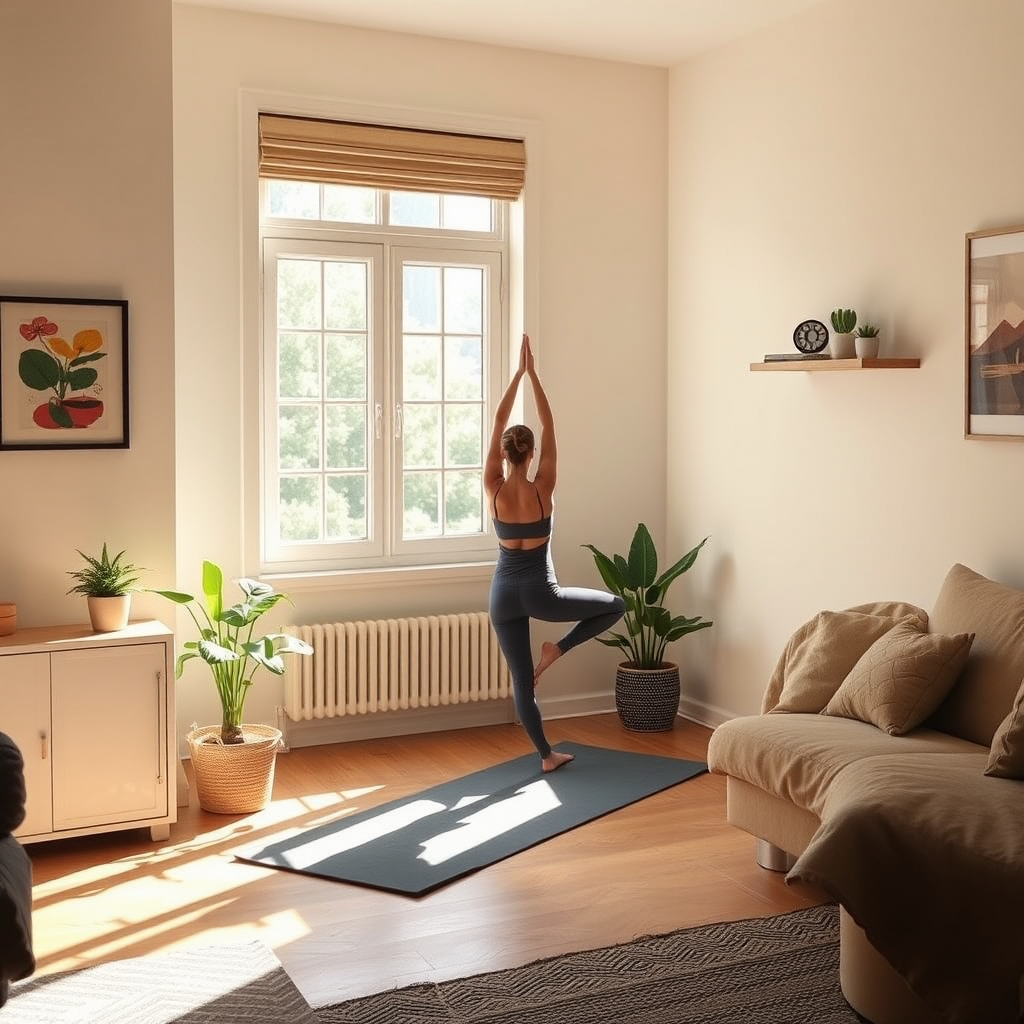
The ideal yoga space doesn't require a dedicated room. Look for areas in your home that offer:
- Natural light: Morning sunlight energizes your practice, while softer evening light promotes relaxation
- Adequate floor space: You should be able to extend your arms and legs fully in all directions
- Minimal distractions: Away from high-traffic areas and electronic devices
- Good ventilation: Fresh air supports deeper breathing and concentration
- Level flooring: Ensures stability and safety during poses
Many practitioners find success in repurposing corners of bedrooms, living rooms, or even covered outdoor spaces. The key is consistency—using the same space regularly helps build a stronger mind-body connection.
Essential Equipment: Starting with the Perfect Mat
Your yoga mat is the foundation of your practice space. When selecting a mat for home use, consider:
Thickness and Cushioning
A 4-6mm thick mat provides optimal balance between comfort and stability. Thicker mats offer more cushioning for sensitive knees and joints, while thinner mats provide better ground connection for balance poses.
Material and Grip
Natural rubber mats offer excellent grip and durability. For those with latex allergies, TPE (thermoplastic elastomer) mats provide similar benefits with hypoallergenic properties.
Beyond the mat, consider these additional props to enhance your home practice:
- Yoga blocks: Support proper alignment and make poses accessible
- Straps: Assist with flexibility and deeper stretches
- Bolsters: Essential for restorative poses and meditation
- Blankets: Provide warmth during relaxation and can serve as props
Incorporating Japanese Minimalist Design Principles
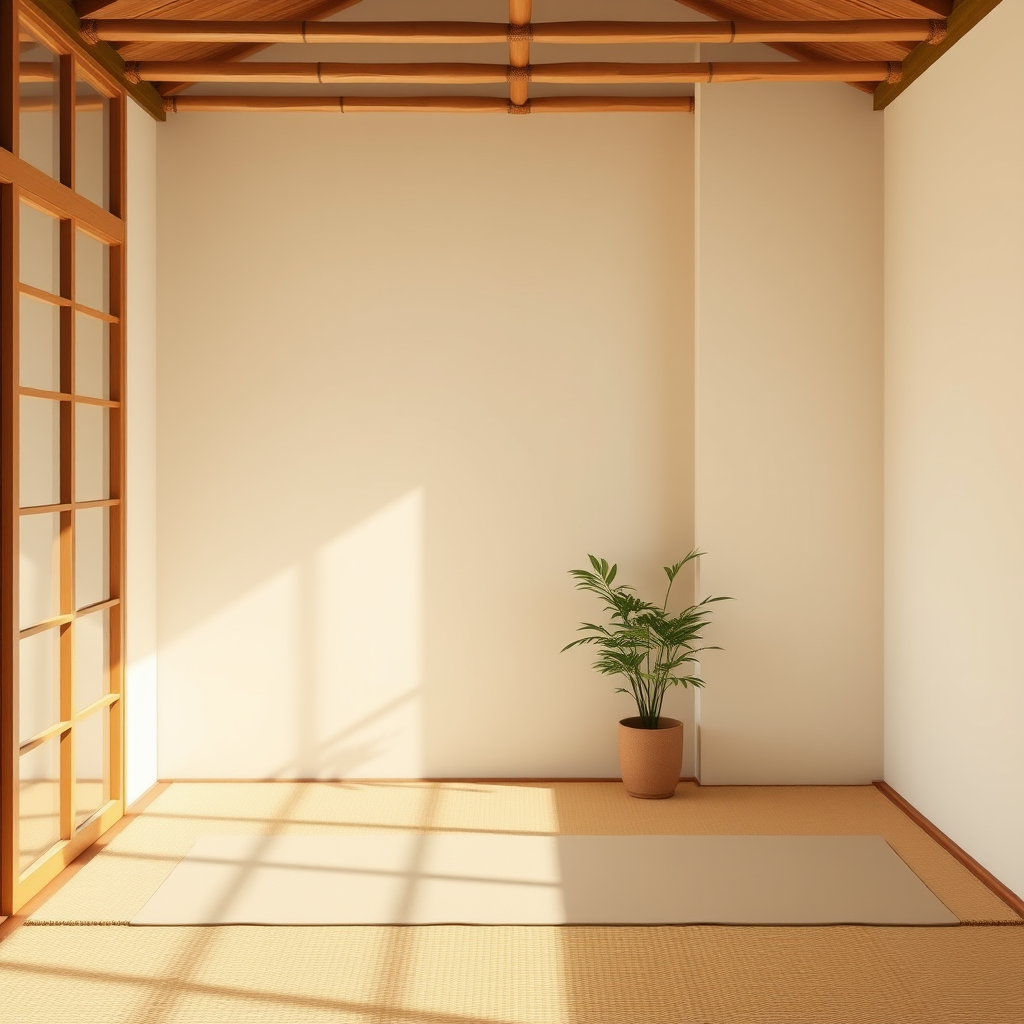
Japanese design philosophy emphasizes simplicity, natural materials, and the creation of peaceful spaces—perfect principles for a home yoga sanctuary. Here's how to incorporate these elements:
Embrace Negative Space (Ma)
In Japanese aesthetics, empty space is as important as filled space. Keep your yoga area uncluttered, allowing energy to flow freely. Store props in simple, natural containers or built-in storage to maintain clean lines.
Natural Materials and Earth Tones
Incorporate elements like bamboo, wood, and stone. Choose props and decorations in neutral colors—soft grays, warm whites, and natural browns create a calming palette that supports mindfulness practice.
Single Point of Focus
Rather than multiple decorative elements, choose one meaningful focal point—perhaps a small plant, a simple piece of art, or a meditation cushion. This supports concentration and reduces visual distractions.
Lighting and Ambiance for Optimal Practice
Lighting dramatically affects your yoga experience and ability to maintain focus. Create a flexible lighting system that adapts to different types of practice:
Morning Practice
Maximize natural light to energize your body and mind. Position your mat to face east if possible, allowing morning sunlight to naturally illuminate your space.
Evening Practice
Use warm, dim lighting to promote relaxation. Salt lamps, candles, or warm LED bulbs create a peaceful atmosphere perfect for restorative yoga.
Meditation Sessions
Soft, indirect lighting helps maintain alertness while supporting inner focus. Avoid harsh overhead lights that can create tension.
Creating Boundaries and Sacred Space
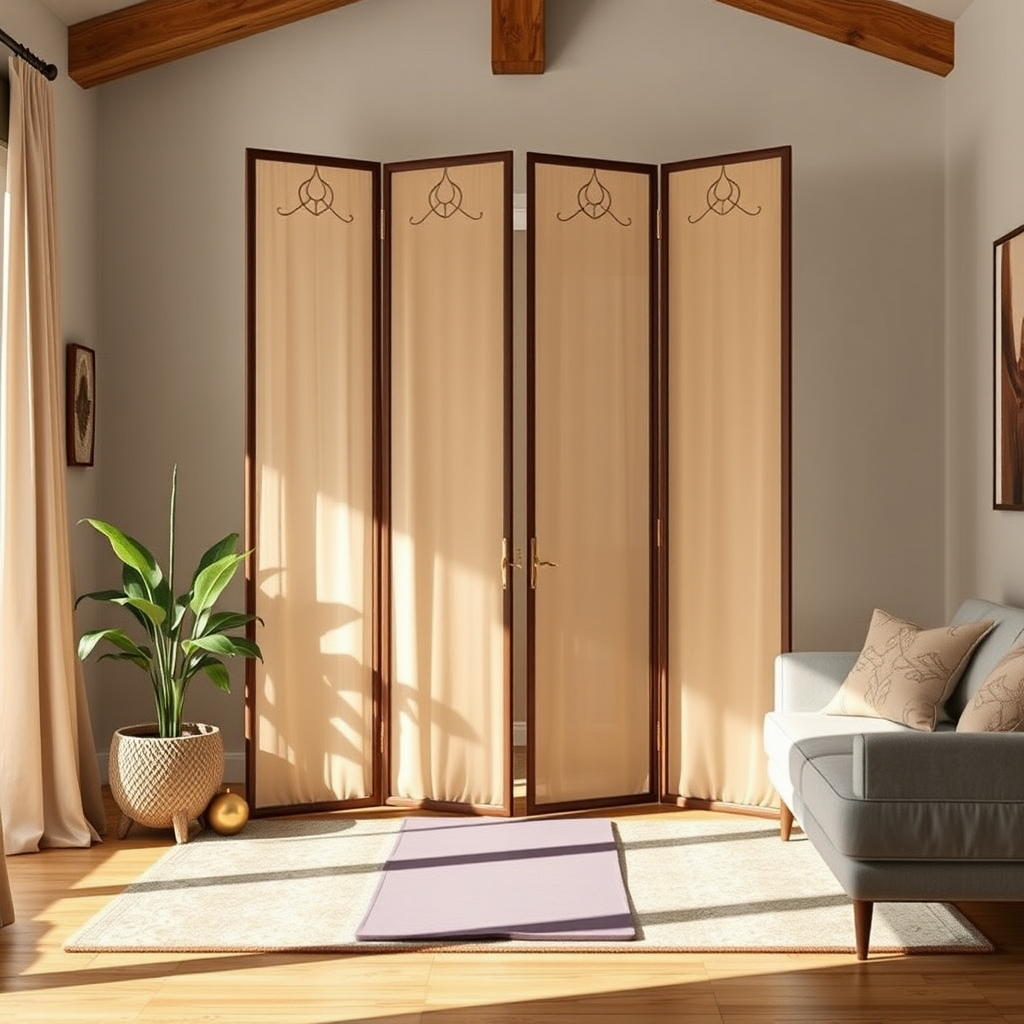
Even in shared living spaces, you can create a sense of sacred space for your practice. Physical and energetic boundaries help signal to both yourself and others that this area is dedicated to mindfulness and self-care.
Consider using folding screens, curtains, or even strategically placed furniture to define your yoga area. These boundaries don't need to be permanent—the act of setting up and taking down your space can become part of your practice ritual.
Establish clear communication with family members or roommates about your practice times. This mutual respect creates an environment where everyone can support each other's wellness journey.
Technology Integration for the Best Yoga App Experience
When using the best yoga app for home practice, your space setup becomes even more important. Consider these technical aspects:
- Device positioning: Place your tablet or phone at eye level when in a seated position, about 6-8 feet away
- Audio quality: Invest in a small Bluetooth speaker for clear instruction audio
- Stable internet: Ensure strong Wi-Fi signal in your practice area for uninterrupted streaming
- Charging station: Keep devices charged and easily accessible without cluttering your space
Many practitioners find that having a dedicated device for yoga practice helps maintain the sacred nature of their space, separating practice time from daily digital distractions.
Personalizing Your Space for Deeper Connection
While minimalism is key, personal touches that inspire and motivate you are equally important. Consider incorporating:
Meaningful Elements
- A small altar or shelf with items that inspire you
- Essential oils or incense for aromatherapy benefits
- A journal for recording insights and progress
- Crystals or stones that resonate with your practice
- A small bell or singing bowl for beginning and ending sessions
Remember that your yoga space should evolve with your practice. What serves you as a beginner may change as you deepen your understanding and connection to yoga. Allow your space to grow and transform alongside your journey.
Maintaining Your Sacred Space
A clean, organized space supports a clear, focused mind. Develop simple maintenance routines:
Daily: Roll up your mat mindfully after each practice, expressing gratitude for your session. Wipe down any props used and return them to their designated places.
Weekly: Deep clean your mat and props. Dust surfaces and refresh any plants or natural elements in your space.
Monthly: Reassess your space. Are there elements that no longer serve your practice? Is there anything new you'd like to incorporate?
This maintenance becomes part of your practice—a moving meditation that honors the space that supports your growth and well-being.
Adapting Your Space for Different Practice Styles
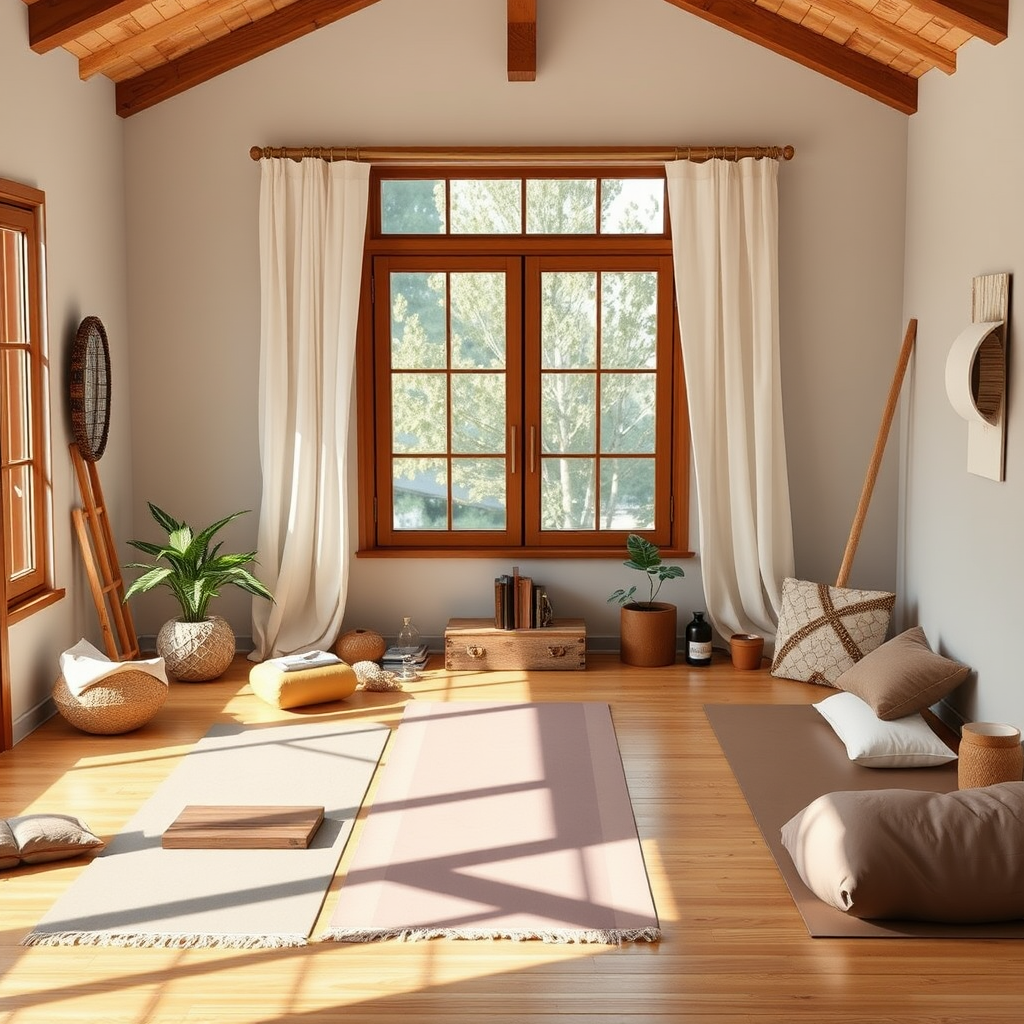
Your home yoga space should be versatile enough to support various practice styles. Whether you're following yoga at home for beginners routines or advanced sequences, consider how your space can adapt:
Dynamic Practices
For vinyasa or power yoga, ensure you have adequate space for flowing movements. Clear away any obstacles and consider using a larger mat or connecting multiple mats.
Restorative Sessions
Have bolsters, blankets, and blocks easily accessible. Consider dimmer lighting options and perhaps a diffuser with calming essential oils.
Meditation Practice
A comfortable cushion or meditation bench, positioned facing your focal point, creates the perfect setup for seated practice.
Pranayama (Breathing)
Ensure good air circulation and consider the direction you face—many practitioners prefer facing east for morning breathing exercises.
Building Consistency Through Environmental Cues
Your perfectly designed space becomes a powerful tool for building a consistent practice. Environmental psychology shows that our surroundings can trigger specific behaviors and mental states. By creating strong visual and sensory cues in your yoga space, you're programming your mind to more easily shift into a practice mindset.
Consider establishing a simple ritual for beginning each session—perhaps lighting a candle, taking three deep breaths, or setting an intention. These actions, performed in your dedicated space, create powerful neural pathways that support long-term practice consistency.
For those just starting their journey with yoga at home for beginners, this environmental support can be the difference between a practice that fades after a few weeks and one that becomes a lifelong source of strength and peace.